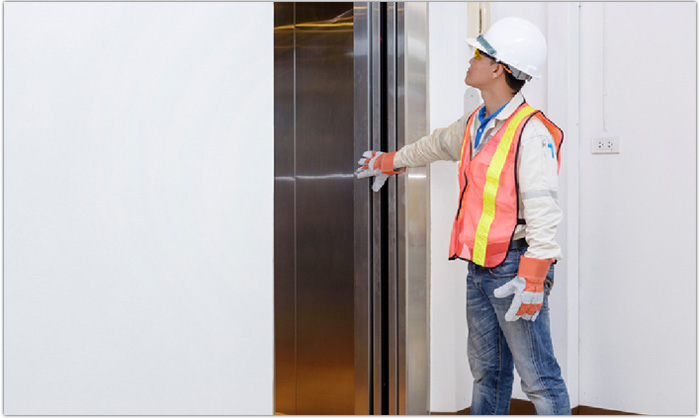Elevators offer an unparalleled amount of convenience and comfortable travel between floors for passengers, whether in a hotel, apartment building or office complex. However, at the top of the list of things to consider when designing an elevator should be safety.

From safety brakes and door sensors to emergency lighting and pit buffers, there are many safety features to consider when designing your elevator. Let’s take a look at some integral safety features when it comes to elevator design.
Minimizing Injury and Maximizing Peace of Mind
Building owners should never compromise on the safety and health of their tenants, guests, visitors and clients. Safety features are put in place for a reason, and that’s to prevent injuries, improve comfort and convenience, and provide peace of mind to all who use the elevator. Adherence to the highest standards of safety and performance is integral.
Here are some examples of general safety design features for elevators:
- Emergency alarm switches
- Safety brakes
- Door-closing devices
- Door sensors
- Emergency power
- Hoistway door interlocks
- Door restraints
- Hoistway safety switches
- Emergency evacuation feature
- Pit buffers
- Emergency lights
- Emergency phones
- Fire emergency systems
To ensure total passenger safety, elevators should be equipped with safety features that prevent accidents and eliminate free-falling risk. Some of those features include:
- Overspeed Governor: Also known as the speed limiter, this measures and regulates the elevator’s speed. It’s connected to the cabin by a steel cable. If the elevator were to exceed its rated speed, this feature would cut power to the motor to slow down the motor shaft. In the event the cabin enters free fall, the tripping assembly would be triggered by the flyweights, stop the governor rope, and halt the car.
- Overload Sensor: Elevators must have a rated weight capacity that cannot be exceeded. This ensures the elevator doesn’t carry more than the rated capacity and will not operate until the load has been decreased.
- Photocell Sensors: Situated between the cabin door and landing doors, this creates a light curtain. When crossed, a signal will be sent to open the doors. Photocell sensors prevent the doors from closing on passengers as they get into the elevator.
- Door Lock Safety Switches: These switches will make sure the elevator does not move when the doors are open. The doors must be fully closed to begin travel.
- Ceiling Fan: This gives ventilation to the cabin.
- Buffers: These are safety devices situated under the cabin and counterweight, and they prevent descending cars from going beyond their normal limit. They soften and absorb the shock, protecting both the passengers and the elevator.
As you can see, there are many safety features that should be implemented into the design of any modern elevator.
Contact Mowrey Elevator
To browse our safety features for your elevator or to ask questions about our products to ensure total safety of your passengers, contact Mowrey Elevator today. We are also available 24/7 at 800-441-4449 on our emergency repair hotline.
